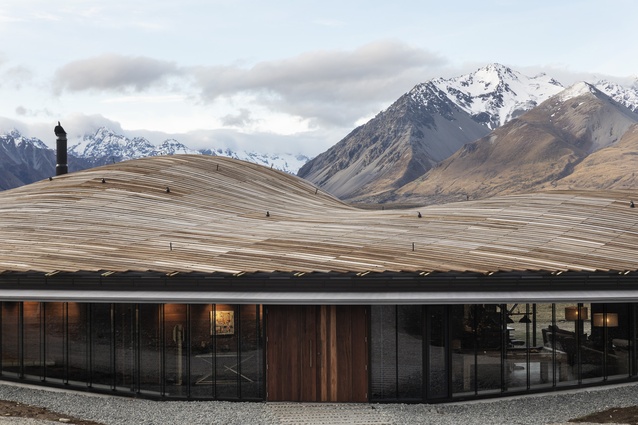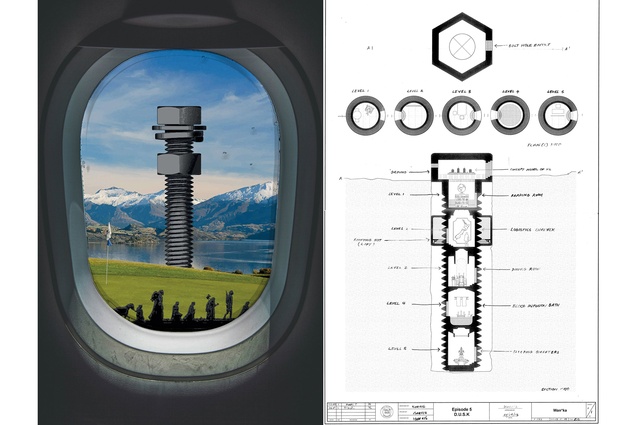COVID consciousness: Against the bunker
One of the more bizarre schemes promoted during the COVID-19 pandemic was one to attract 2000 foreign high-net-worthers to invest at least $50 million in New Zealand, the price of a safe haven. Isaac Sweetapple resists this classist retreat.
The ‘fight’ against the outbreak of COVID-19 has prompted ‘wartime’ responses from policymakers and companies in an effort to retain and reinstate a sense of normality within public and private space. As the globe continues to further subdivide into a multi-polar patchwork of private strongholds and pockets of autonomous resistance, New Zealand looks to cash in on its mythological status as isolated and pure. This apparent isolation has caught the attention of many individuals abroad and the speculation around their activities has led a number to act on their apocalyptic/utopian fantasies.
Conjecture about the construction of bunkers and boltholes in New Zealand continues to be perpetuated by various forms of dread merchants. The images used to promote these projects – whether they be a concept render, a blockbuster franchise or a national tourism campaign – have been, and are being, acted on in real-time.

The bunker has become the latest defeatist prophylactic to be revitalised through myth and speculation. Formally, bunkers are viewed as enclaves and are architectures of externalisation. Retroactively, bunkers entice a sense of impenetrability, security, control and purification; essentially becoming illusionary “sovereign filtering decisions camouflaged as something else.”1 Fittingly described by French philosopher Paul Virilio:
“The bunker has become a myth, present and absent at the same time: Present as an object of disgust instead of a transparent and open civilian architecture, absent insofar as the essence of the new fortress is elsewhere, underfoot, invisible from here on in.”2
This image of the bunker is one which has been defined through a series of speculative spatial ideals – explicitly seen in both architecture and film (particularly within fantasy and science fiction). Both mediums, for better or worse, leverage their representational authority to create propositions about the potential convergences of societies, protagonists, machines and materials.3

Within film, it is hard to look past the spaces of the one franchise to rule them all and the books that precede it. Both Tolkien’s works and Jackson’s films – whether it be the concept of a cosy hobbit-hole at the end of the earth or the creation of a new species within the Caverns of Isengard – hold a special place in the minds of many of New Zealand’s newest, high-profile citizens.
In architectural practice, it isn’t much of a leap to categorise work such as Monk Mackenzie’s X_House concept or Architecture Workshop’s Lindis Lodge as buildings which, even before seductively hunkering down into the landscape, suffer from similar delusions of the bunker mentality. These supposedly speculative acts, coupled with New Zealand’s various branding strategies, have resulted in real, tangible spatial changes to life in New Zealand.
COVID-19 has unearthed the fact that something strange is again set to inhabit this place we like to naively call “ours” – not the first time Aotearoa’s apparent isolation has been used as a promotional tool to entice foreign investment in “the playground of the Pacific”.4 This uncanny feeling is, in reality, nothing new or alien but something long forgotten and often repressed.5 Things were never so pure here in the first place.6 The myth of our apparent isolation, and illusion of the security that it provides, is a product of the repression of certain insecurities that are fundamentally linked to and perpetuated by the “Kiwi way of life”.7
The consequences of the incoherent global response to COVID-19 has led to an increase in localism, regionalism and, ultimately, nationalism in New Zealand.8 This fetishisation of the local resists the difficult labour required to expand and consolidate. “We cannot move back to any previous social form, nor move forward in isolation”.9 Building bunkers to resist the encroachment of a global pandemic is a politics of defence, incapable of articulating, building or contributing to a new world.10
The illusion and construction of bunker-esque structures directly mediate and constitute the symbolic power inherent in the way in which the speculative influences the real. As it currently stands, the brightly rendered version of space in New Zealand is not practical, nor is it scalable. The spaces this myth of isolation has created are architectural expressions of Enlightenment and of individualism and are part of the problem. To wall off the external altogether is to turn away from the very real problems at hand. We should fight against the bunker and the type of classist
retreat that it beckons and, in turn, demand more from architecture and the forces that guild it.
1 See Bratton, The Stack: On Software and Sovereignty, p 43.
2 Virilio, Bunker Archeology, p 46.
3 Bratton, Dispute Plan to Prevent Future Luxury Constitution, p 75.
4 See the various proposals to start selling visas to foreign investors at the price of $50 million and/or the New Zealand Company’s business model of systematic colonisation.
5 Freud, The Uncanny, p 241.
6 Wigley, Paradise Lost and Found: The Insinuation of Architecture in New Zealand, published in New Zealand Architect, No 45, 1986, pp 44-45.
7 Wigley, Paradise Lost and Found: The Insinuation of Architecture in New Zealand, pp 44-45.
8 This is tolerable (and understandable) in the short term, but detrimental in the long term.
9 Hardt and Negri, Empire, p 206.
10 Srnicek and Williams, Inventing the Future: Postcapitalism and a World Without Work,
p 16.












